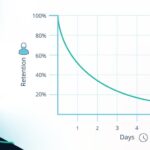Machine learning (ML) is revolutionizing numerous fields by enabling systems to learn from data, identify patterns, and make decisions with minimal human intervention. At the heart of machine learning are various methods that dictate how algorithms learn. Two primary approaches stand out: supervised and unsupervised learning. These methods form the bedrock of most ML applications, guiding how machines interpret data and generate insights. Choosing the right method depends significantly on the nature of the data available and the specific problem at hand.
Delving into Supervised Learning Methods
Supervised learning is arguably the most prevalent method in machine learning due to its straightforward nature and applicability to clearly defined tasks. In this approach, algorithms are trained using labeled datasets. Think of it as learning with a teacher who provides both questions and answers. Each data point in a labeled dataset is tagged with the correct output, allowing the algorithm to learn the mapping between inputs and outputs. This learning process enables the model to predict outcomes for new, unseen data based on the patterns it has identified from the training data. Supervised learning is generally categorized into two main types of problems:
1. Classification Algorithms
Classification problems arise when the goal is to categorize data into distinct classes. The output variable in classification is categorical, meaning it belongs to a predefined set of categories. For example, classifying emails as either “spam” or “not spam” is a classic classification problem. Other applications include image recognition, where images are classified into categories like “cat,” “dog,” or “bird,” and medical diagnosis, where patients might be classified as having or not having a certain disease. These algorithms learn to draw decision boundaries between different classes based on the input features.
2. Regression Algorithms
Regression problems are concerned with predicting a continuous output variable. In contrast to classification, the output in regression is a real value that can take on any value within a range. Examples of regression problems include predicting house prices based on features like size and location, forecasting stock market prices, or estimating the temperature for the next day. Regression algorithms aim to establish a relationship between input variables and a continuous output, often represented as a line or curve of best fit through the data points.
Exploring Unsupervised Learning Methods
Unsupervised learning offers a different paradigm where algorithms learn from unlabeled data, without explicit guidance. In this scenario, the machine is tasked with discovering inherent structure and patterns within the data itself. This is particularly useful when dealing with complex datasets where the correct outputs are unknown or when the objective is exploratory data analysis. Unsupervised learning methods are diverse and cater to various analytical needs, including:
1. Clustering Techniques
Clustering algorithms aim to group similar data points together based on their intrinsic characteristics. The algorithm identifies clusters such that data points within the same cluster are more similar to each other than to those in other clusters. Customer segmentation in marketing, where customers are grouped based on purchasing behavior, and document categorization, where articles are grouped by topic, are common applications of clustering.
2. Association Rule Mining
Association rule mining seeks to uncover relationships or associations between variables in large datasets. These methods are used to find interesting connections, often expressed as “if-then” rules. A well-known example is market basket analysis, where retailers analyze transaction data to discover products that are frequently purchased together, such as “customers who bought product X also bought product Y.”
3. Anomaly Detection Methods
Anomaly detection focuses on identifying outliers or unusual data points that deviate significantly from the norm. These anomalies can represent critical events, such as fraudulent transactions in finance, network intrusions in cybersecurity, or defects in manufacturing quality control. By flagging these unusual patterns, anomaly detection algorithms play a crucial role in risk management and system monitoring.
4. Neural Networks for Feature Learning (Autoencoders)
In the context of unsupervised learning, neural networks, particularly autoencoders, are used for feature learning and dimensionality reduction. Autoencoders learn to compress data into a lower-dimensional code and then reconstruct the original data from this compressed representation. This process forces the network to learn the most salient features of the data, effectively removing noise and redundancy, and improving data quality for subsequent analysis or modeling tasks.
Conclusion: Choosing the Right Method
Both supervised and unsupervised learning methods are powerful tools in the machine learning toolkit, each suited to different types of problems and data availability. Supervised learning excels when labeled data is available and the goal is to predict specific outcomes or classify data accurately. Unsupervised learning shines when dealing with unlabeled data and the objective is to explore data structure, discover hidden patterns, or reduce data dimensionality. Understanding the nuances of these Machine Learning Methods is crucial for effectively applying them and harnessing the full potential of data-driven insights.
